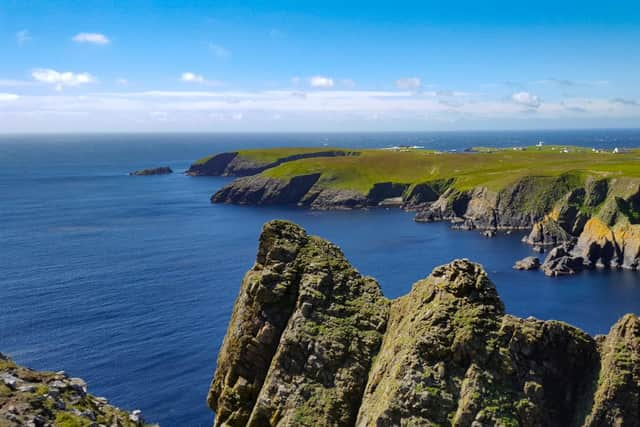Fair Isle: population of UK’s remotest island where every adult is vaccinated, where is it - and why is it famous?
and live on Freeview channel 276
All adults on the UK’s most remote island have now been fully vaccinated against Covid.
The tiny island of Fair Isle achieved the feat after vials of AstraZeneca were flown in on a small plane this week.
Advertisement
Hide AdAdvertisement
Hide AdThis meant every adult resident in the small community has been able to have their second dose.


So, where is Fair Isle - and how has the vaccine rollout in the remote community worked?
Here is everything you need to know.
Where is Fair Isle?
Fair Isle, which has had no Covid cases since the beginning of the pandemic, is the most geographically remote inhabited island in the UK.
It is the southernmost Shetland island, lying about halfway between mainland Shetland and Orkney.
Advertisement
Hide AdAdvertisement
Hide AdAnd it has a population of only 48 people, who mainly live at the south end of the island. It’s three miles long and one-and-a-half miles wide.
The island was first populated around 6,000 years ago, and evidence from some of these early inhabitants is still visible today, including Neolithic land divisions, Bronze Age “burnt mounds” and an Iron Age fort.
It then became an important location for Vikings and Norse settlers.
What is the island known for?
Most people used to work as crofters and fishermen, but the economy is far more diverse today, although agriculture remains a significant part of island life.
Advertisement
Hide AdAdvertisement
Hide AdThe island only received a reliable 24-hour-a-day electricity supply in 2018.
It is well-known for its seabird life, as migrant species use the island as a stopping-off point.
The famous bird observatory, first opened in 1948, attracted visitors throughout spring and autumn.
But it was destroyed by fire nearly two years ago. An enhanced building to replace it, costed at £7.4 million, has now secured planning permission.
Advertisement
Hide AdAdvertisement
Hide AdOf course, Fair Isle is perhaps best known for the knitwear that carries its name.
In modern times, the vast majority of the knitwear made does not follow the patterns of the island’s craftspeople - but these skills have been passed down through generations, and visitors are able to buy authentic garments from local knitters.
Tourists also flock to the island due to its reputation as a very sociable place, famous for its music and dancing.
How was its population vaccinated?
The island’s far-flung location meant there were logistical challenges when it came to vaccinating the population against coronavirus.
Advertisement
Hide AdAdvertisement
Hide AdThe UK’s first-approved jab, from Pfizer-BioNTech, required extremely low storage temperatures which meant the tiny planes and boats travelling to the island were not an option.
And as the island’s residents are older, transporting people individually to the mainland vaccination clinic would not have worked.
Thankfully, AstraZeneca’s vaccine is able to be transported in a cool box.
NHS Shetland sent the vials of the jab on the tiny planes that run lifeline services to its smaller communities.
Advertisement
Hide AdAdvertisement
Hide AdSome of Scotland’s other remote islands have also been vaccinated in the same way, including Hebridean islands and Shetland’s Foula and Skerries.
About 45 doses of the vaccine were given out to Fair Isle’s eligible residents over one morning.
Nurse Kirsten Robson, who was one of two vaccinators who inoculated people, described the island’s jabs rollout as “great”.
She told Good Morning Scotland: “We’ve had 10 days without a boat, so the boat managed to come in yesterday so we then had a boat and a full shop and now we have had our second vaccinations, the sun is out and the lambs are coming.”
Why did the remote community need to be jabbed?
Advertisement
Hide AdAdvertisement
Hide AdBrian Chittick, NHS Shetland’s director of community health and social care, told Good Morning Scotland that vaccinating the entire population was “really important” despite the island having no confirmed cases.
“Fair Isle was one of those areas in the UK where there were no confirmed Covid cases so we thought it was really important to continue that as a statistic moving forward so we were very keen that we went in and undertook the vaccine programme for all those who were entitled in one go,” he said.
Jabbing the community was also significant so residents are able to welcome tourists back when it is safe to do so.